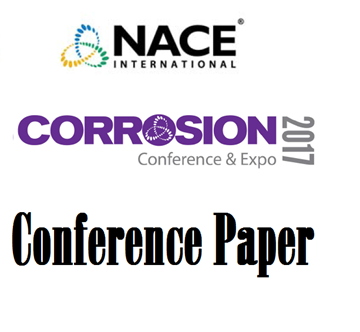Search
Products tagged with 'scale'
View as
Sort by
Display
per page
Integrity Management of Oil Wellheads and Flowlines Having Scaling
Product Number:
51317--9323-SG
ISBN:
9323 2017 CP
Publication Date:
2017
$20.00
Kinetic and Morphological Investigation of Calcium Sulfate Dihydrate (gypsum) Scale Formation on Heat Exchanger Surfaces in the Presence of Inhibitors
Product Number:
51317--9020-SG
ISBN:
9020 2017 CP
Publication Date:
2017
$20.00
Kinetic Turbidity Test Method For Scale Inhibitor Evaluation On Multifunctional Scales
Product Number:
51321-16959-SG
Publication Date:
2021
$20.00
NACE Publication 1D191-2003-SG, A Review of Screening Tests for Gypsum Scale Removal Chemicals (2003 Edition)
Product Number:
24008-SG
ISBN:
1D191 A Review
$109.00
NACE TM0374-HD2001-SG, Laboratory Screening Tests to Determine the Ability of Scale Inhibitors to Prevent the Precipitation of Calcium Sulfate and Calcium Carbonate from Solution (for Oil and Gas Production Systems)
Product Number:
21208-HD2001-SG
ISBN:
1-57590-124-2
$179.00
New Approach on Iron Sulfide Scale Modeling and Prediction at pH 4-7
Product Number:
51320-14532-SG
Publication Date:
2020
$20.00
Non-Acidic Iron Sulfide Scale Dissolver: From Lab Development To Field Application
Product Number:
51321-16764-SG
Publication Date:
2021
$20.00
On Defending against Calcium Carbonate and Asphaltene Deposits Using Dual-Action Diamond-Like Carbon and Polymer-Like Coatings
Product Number:
51324-20896-SG
Publication Date:
2024
$40.00
Protective Coatings Against Formation of Scale Deposits
Product Number:
51323-19528-SG
Publication Date:
2023
$20.00
Recent Failures Of Accelerated High Temperature Sulfidation Corrosion In The Oil Refining Industry
Product Number:
51321-16738-SG
Publication Date:
2021
$20.00
Review of a Refinery Boiler Tube Failure
Product Number:
51323-19067-SG
Publication Date:
2023
$20.00












